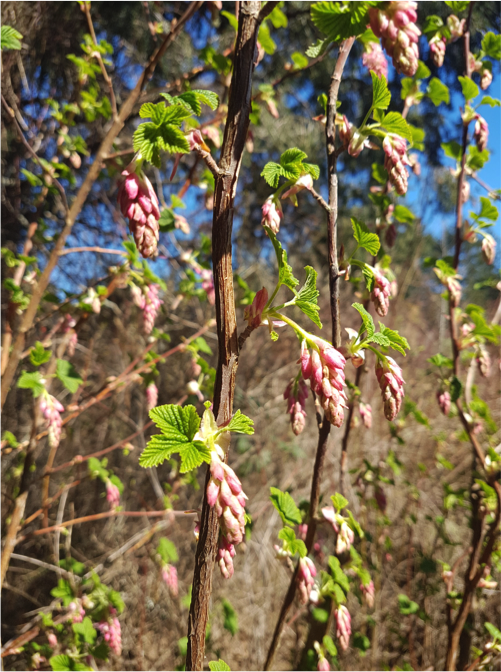Of This Land
Of this Land by Fareeha Siddique
Reflections on Introduction to Ethnobotany by guest lecturer Hannah Roessler
Part 1 of our 2019 Pacific Horticulture Student Blogs on Ethnobotany
Many people, especially of modern-day era, tend to suppose that the act of gardening and garden-making is a one-way stream - wherein we take from the land, use its materials, harvest, create grandeur designs and setup a practical living routine, with it bearing no affect on us. However, we do not only garden, but are also gardened in return. As the saying goes in the permaculture field, in which ethnobotanist and agroecologist, Hannah Roessler, has extensive experience in: “Everything gardens”. And this rings a bell of truth.
As creatures of this land, we coexist with other living and non-living beings, formulating a deep, complex and interconnected web. An interchange exists, a multi-dimensional relationship is formed, where to some extents we shape and mold the environment around us, and in return are changed by it. The field of ethnobotany - vast and dynamic - seeks to understand and delve into these very notions, and moreover, wonders about the interrelationship that exists between people and plants. The intimacy that people have with plants and share with their environment is deeply rooted, and found in cultures all across the globe.

Ribes sanguineum, “Flowering Currant”. With Hannah we went on a walk into the gardens, observing and learning about native plants and their importance. The blooming of Ribes in the spring is the signal for the hummingbird, Rufous, to come back home.
In seeking to understand this intimate story and connection, one of the key aspects that ethnobotanists venture into is recognising and appreciating Traditional Ecological Knowledge (TEK), that is “a cumulative body of knowledge, practice and belief, evolving by adaptive processes and handed down through generations by cultural transmission, about the relationship of living beings (including humans) with one another and with their environment” (Berkes, 1999). Indigenous cultures, therefore, hold a special space in ethnobotanical inquiry as they have centuries of passed down knowledge and methodologies. By seeing how different groups incorporate plants in their knowledge domains; how they work with the land, manage and tend it in ways that are sustainable, efficient, and mainly respectful; may provoke new thoughts on how to interact with one's own immediate biota. This is not to be romanticising TEK, or deeming one mode of living as better than the other, but rather being privy of the knowledge that exists out there, and appreciating it for what it is.
In this regard, I feel lucky to have just recently moved to British Columbia, living upon unceded Indigenous territory. The wealth of knowledge that exists here, on a land that has been gardened on and cared for by many, many generations of First Nations Peoples, tells me that I have much to learn. Seeing to other cultures who work with the land in a symbiotic manner, receiving and giving, in a sustainable way inspires me with hope that solutions to current environmental issues can be sought. As creatures of this land, it is important for humans to become privy of the workings of nature, and realising that we are informed by it, as much as we inform it.
Bibliography: Berkes, F. (1999). Sacred Ecology: Traditional Ecological Knowledge and Resource Management. London, UK: Taylor & Francis

